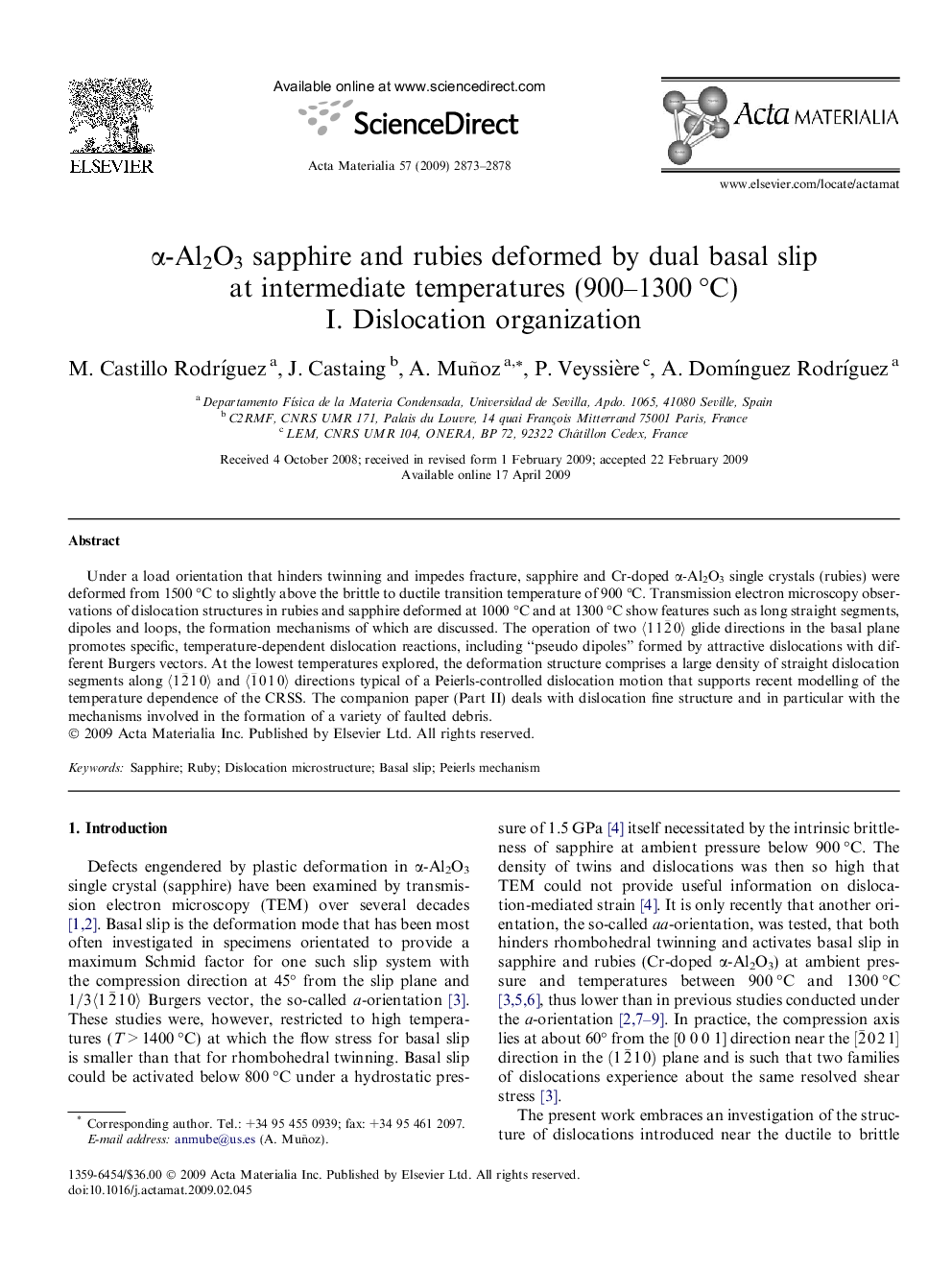| Article ID | Journal | Published Year | Pages | File Type |
|---|---|---|---|---|
| 1449214 | Acta Materialia | 2009 | 6 Pages |
Under a load orientation that hinders twinning and impedes fracture, sapphire and Cr-doped α-Al2O3 single crystals (rubies) were deformed from 1500 °C to slightly above the brittle to ductile transition temperature of 900 °C. Transmission electron microscopy observations of dislocation structures in rubies and sapphire deformed at 1000 °C and at 1300 °C show features such as long straight segments, dipoles and loops, the formation mechanisms of which are discussed. The operation of two 〈112¯0〉 glide directions in the basal plane promotes specific, temperature-dependent dislocation reactions, including “pseudo dipoles” formed by attractive dislocations with different Burgers vectors. At the lowest temperatures explored, the deformation structure comprises a large density of straight dislocation segments along 〈12¯10〉 and 〈1¯010〉 directions typical of a Peierls-controlled dislocation motion that supports recent modelling of the temperature dependence of the CRSS. The companion paper (Part II) deals with dislocation fine structure and in particular with the mechanisms involved in the formation of a variety of faulted debris.
